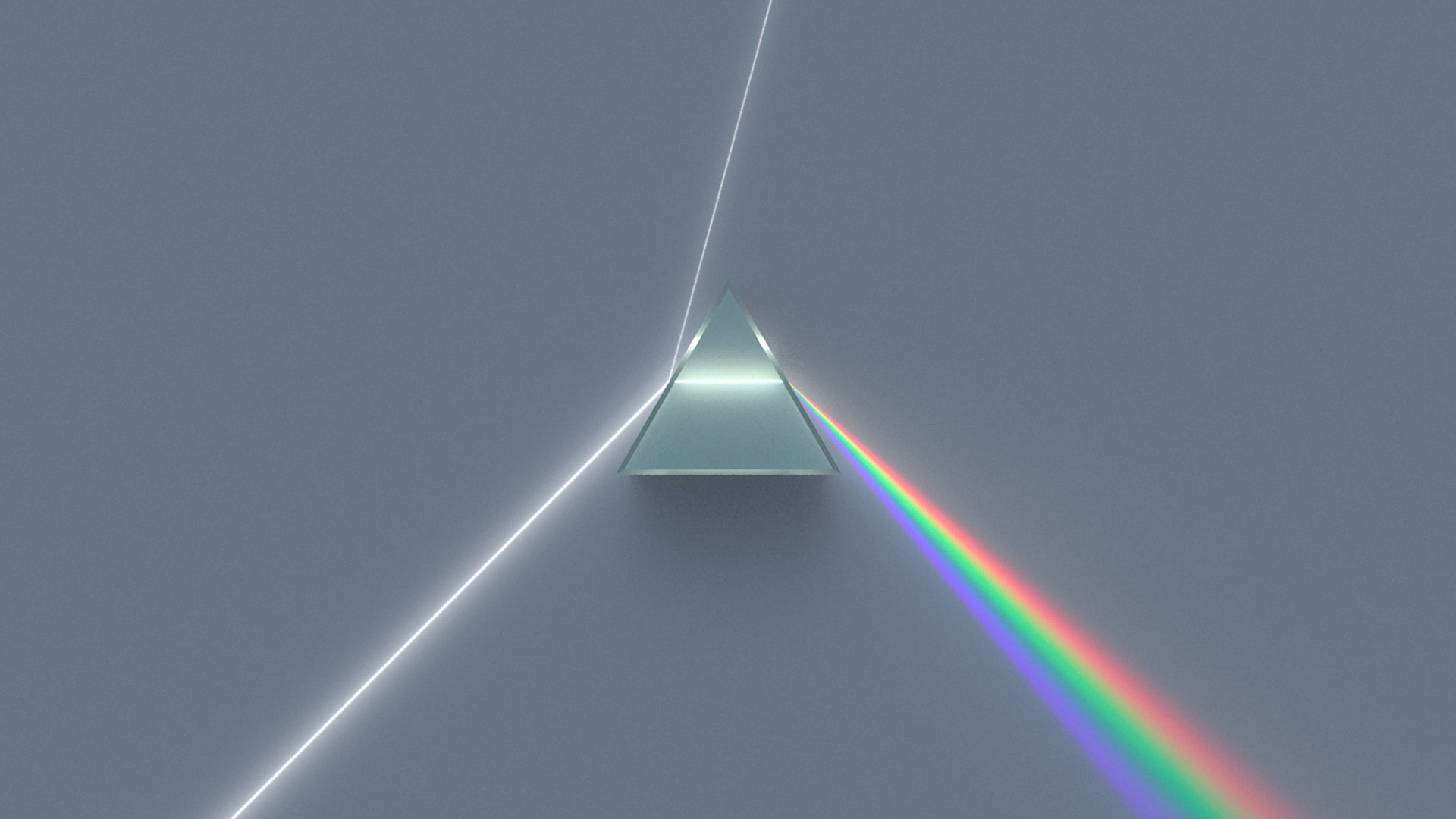The difference between additive and subtractive colour mixing
There are two ways to combine the three basic colours (called the three primary colours) to create other colours: additive colour mixing and subtractive colour mixing.

The three primary colours of LIGHT
Additive (RGB)
The three primary colours of light are blue (B), green (G), and red (R). These three colours are combined using additive colour mixing to reproduce the range of visible colours. Additive colour mixing works by adding different colours of light on top of each other, the more light that is mixed the brighter the result. Mixing the three primary colours equally produces white light.

Example: Prisms
Isaac Newton’s famous experiments with sunlight and prisms (replicated in every rainbow) proved that white light is a mixture of colours. When white light is passed through a glass prism, the different wavelengths of visible light are spread out so that we can see the individual colours that are combined to make the white light.

The three primary colours of PIGMENT
Subtractive (CMYK)
The three primary colours of pigment are cyan (C) magenta (M) and yellow (Y). These three colours are combined using subtractive colour mixing to reproduce the range of visible colours. Subtractive colour mixing is different from additive colour mixing not because it involves light, but because it involves mixing the surface colours of various pigments. The more pigments that are added the darker the result, and mixing three primary colours produces black.

Example: Printing
CMYK is commonly used for colour process printing. The four base colours are used in combination (via small dots on the printed page) to form all possible colours within the spectrum. Individual amounts of some, or all of the four colours, are used to replicate different hues.
We tend to believe that the colours we see in objects are a feature of the materials the object is made from; in fact, the colours we see are a feature of the light that illuminates the object.
A good example of this is RGB by Carnovsky. Back in 2010 the Johannsen Gallery in Berlin presented an exhibition of wallpapers by Milanese collective Carnovsky that changed under different lighting conditions. The wallpaper, called RGB, featured superimposed imagery printed in red, green, yellow and blue. The separate layers were revealed when illuminated by different coloured lights.

Wallpaper in white light

Wallpaper in red light

Wallpaper in green light

Wallpaper in blue light


